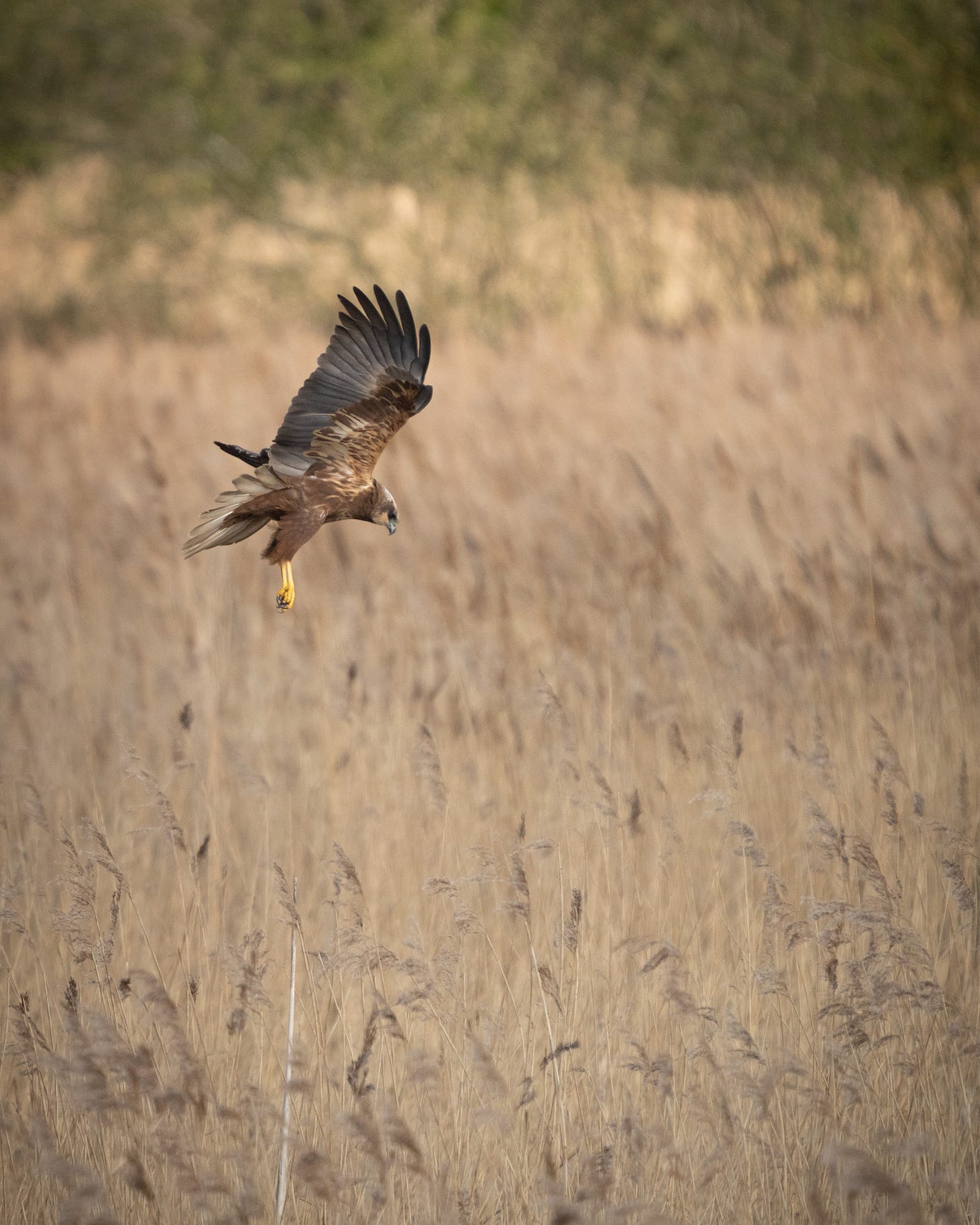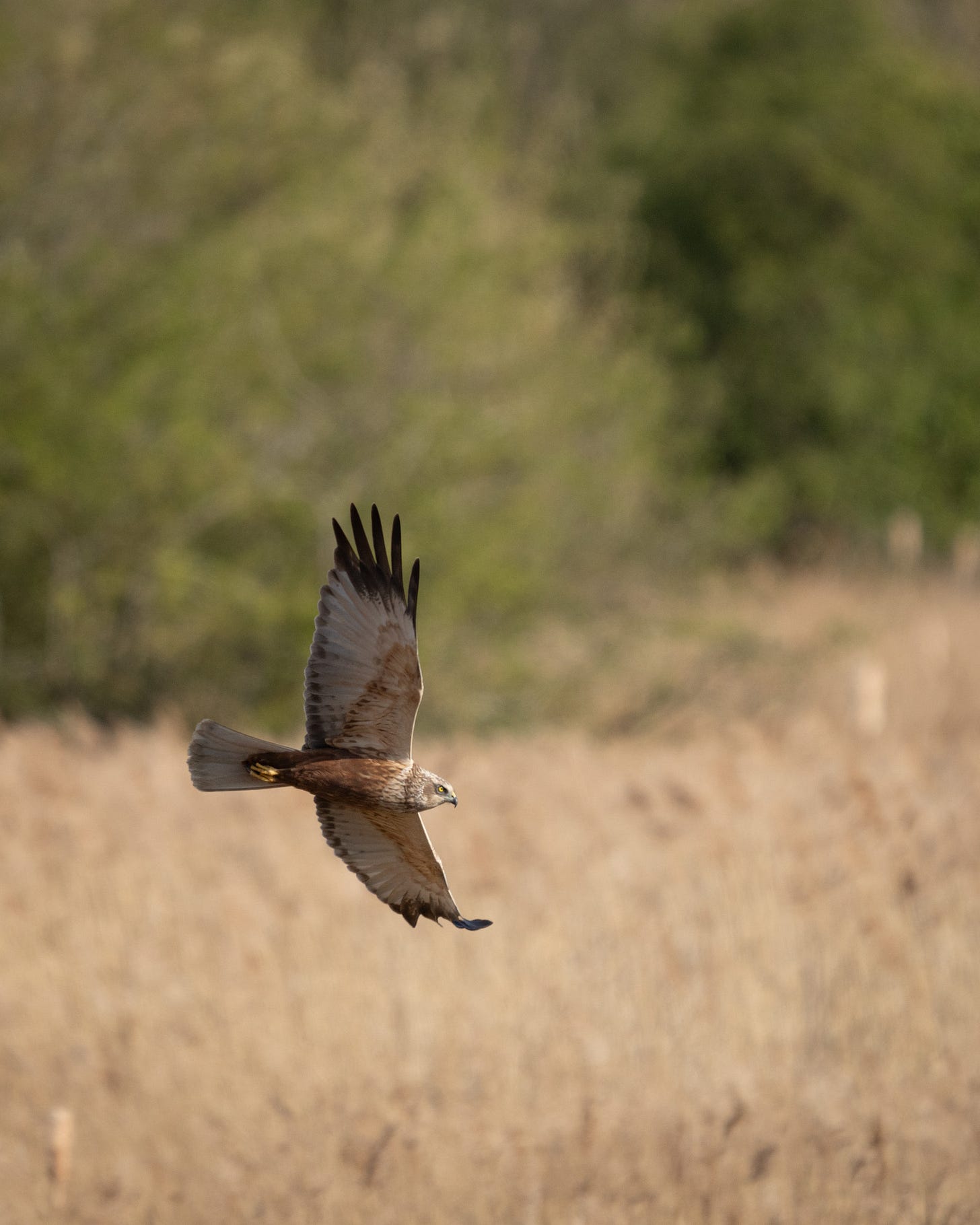This post has been migrated over from my original Substack account. This is its new home, so make sure you’re following me here to stay connected! Some images and other formatting may have been lost in the move – sorry about that.
There’s a never-ending stream of birdsong in the UK at the moment. Our native birds have found their voices after a particularly dreary wintertime. And they’re competing with our summer visitors, who have mostly arrived. You can brush up on your birdsong skills on the RSPB website – I’ve linked each bird that I mention, so you can listen in just two taps.
Seasonal soundtrack
With a name like the ‘warblers’, you might expect this group of birds to have the most beautiful songs. In some cases you’d be right, but some of them really let the team down. And when it comes to telling the 12 species apart when they’re not singing… well, it can be near-on impossible.
The least warbly warbler has to be the Chiffchaff, whose name gives you an idea of how intricate their song is. Two notes, sometimes three, played again and again and again. An entry-level warbler, you should be able to hear one in almost every park, common or green space in the UK.
While the song of the first Chiffchaff heralds the start of spring, give it another month and they start to sound like petulant children. But they’re delightful to watch as they flit about picking off insects; I can’t bring myself to stay mad at them.
If you think you see a Chiffchaff, but can’t hear it, you might be in luck. Check the legs: Chiffchaffs usually have dark legs. If yours has pink legs, just wait to hear it sing.
Because the Willow Warbler, despite looking nearly identical, has a sweet, lilting melody that descends slightly towards the end. Listen out for them in scrubby woodland, and in trees near bodies of water. They’re ‘Amber list’, which means not as common as Chiffchaffs, but still numerous enough that you can find one if you cover enough ground.
Of course, your bird might end up being a Garden Warbler. These also have a lovely song, not unlike that of the Blackcap (yet another warbler). It’s quite complicated and I can’t find a specific feature to mention in order to describe it to you. Which, sadly, is a criticism the poor Garden Warbler is used to. Here’s what the RSPB has to say about them:
A very plain warbler with no distinguishing features.
Brutal.
They tend to hide in dense bushes and trees, so spotting one is really tricky! But you can find them across almost the entire country during summer, so it’s worth learning their call.
There are plenty of other warblers to listen to, which I suspect will make an appearance in later entries here. Here’s a brief intro to the rest of our complement of warblers:
Blackcap: their song sounds like that of the Robin, but with an upward inflection on the final two notes that sounds like they’re asking a question.
Common Whitethroat: very obliging – will often hop out onto the top of a bush to sing at you (pictured below). Their call isn’t a ‘pretty’ melody, but it’s very pleasant.
Lesser Whitethroat: a slightly boring, churring ‘cheep-cheep-cheep-cheep’ call. Cute little dark mask though.
Grasshopper Warbler: a very impressive long trill that sounds just like a cricket! Older folk may not be able to hear its call, and all of us might actually confuse it for a grasshopper. These are ‘Red List’, so not easy to find.
Reed Warbler: it sounds like a comedy library of bird sound effects being played all at once. Chaotic. Often hiding among the reeds with Sedge Warblers.
Sedge Warbler: a toned-down, less chaotic version of the Reed Warbler’s call, mostly clicks and chirps.
Cetti’s Warbler: an explosive call you hear in the reeds and bushes near water, but you’ll almost never catch sight of the tiny bird that makes it.
Dartford Warbler: loves heaths, especially gorse bushes. Another noisy call and another Amber listed bird with very limited distribution, mostly around the coast. Distinctive red ring around the eye, which I personally dislike (looks mean!), but some people find quite striking.
Wood Warbler: found mostly in Wales, Scotland, the north of England and the south coast during summer. Sounds like a harsher version of the Willow Warbler. (The only UK warbler species I’ve never seen.)
A helping hand/ear
The Merlin App is a fantastic free tool for new and experienced birders alike. You pop on the recording function and it tells you who’s singing in your vicinity.
A word of caution though, it does hallucinate a bit. In my experience, it’s 90% reliable, with 5% of calls not getting any ID at all (boo!), and another 5% labelled as something utterly ridiculous. That’s how I discovered what a ‘Tundra Bean Goose’ is (except it wasn’t).
Beasts with branding issues
I love discovering a new species with a wild name, like Africa’s Bare-Faced Go Away Bird, or the Bone-Eating Snot Flower Worm of the deep sea. But when it comes to identifying British invertebrates… well, their names can be more of a hindrance than a help.
For example, I saw a female Hairy-Footed Flower Bee in the garden yesterday – a small bumble bee that is entirely black aside from her orange hind legs. But if she had hairy feet, I certainly didn’t notice. And check out the Yellow-Barred Brindle moth, below, which has precisely zero yellow on it.
There’s a whimsical side to zoology that comes out to play in butterfly and moth names. There’s the Bloxworth Snout, the Dingy Mocha, the Foxglove Pug, the Heart And Dart and the Figure Of Eighty. Some hint at what the moth or caterpillar looks like, but many appear to be named on the whim of the naturalist who discovered them. But I’ve rambled off-track – I haven’t seen a single moth this week.
Notes from the (spider) web
What I have seen, inside my home, are male spiders. You can tell they’re male because they have boxing glove-like blobs on the end of their 'pedipalps’, which you might think of as the tiny ‘arms’ at the front of the spider. Females also have pedipalps, but they are nice and small/neat.
Like most naturalists (even if they don’t admit it), I don’t love all wildlife equally. I have a mild phobia of Daddy Long Legs (crane flies, to non-Brits). And as a result, also Cellar Spiders, which resemble Daddy Long Legs. The thing that really freaks me out about these fine-legged, delicate spiders is that they actively hunt Giant House Spiders. Yes, those huge ones you find in flowerpots, which probably come in at around 10x their weight. Perhaps I like the giant ones because they are so big as to resemble mice. I like mice.
If you’re trying to overcome a spider phobia, I recommend googling ‘Cute jumping spiders’. They’re adorable, and easy enough to find on walls and brickwork on a sunny day. Fair warning, though – they really do jump! It can be a bit of a shock if you’re inspecting them up close.
Through my lens
I’ll leave you with two recent photos of the magnificent Marsh Harriers nesting at my favourite local reserve (Fowlmere, Cambridgeshire). You can see these birds hunting low over many UK reedbeds and wetlands. They have very severe facial expressions and an impressive wingspan, with striking black tips to their ‘fingers’ (or ‘primary’ feathers).


They often elicit an excited ‘She’s up!’ from the first birdwatcher in a hide to spot them, owing to their habit of appearing out of the reeds and then disappearing back into them moments later. Very exciting (unless you’re after a decent photograph!).
Your turn!
I’d love to hear about your encounters with nature, wherever you are in the world. What have you seen this week, while I was inspecting spiders and listening to birdsong?
If this made you smile or inspired you to go looking for nature, a little tap of the ‘Like’ button goes a long way. Thanks for reading!
Gem





